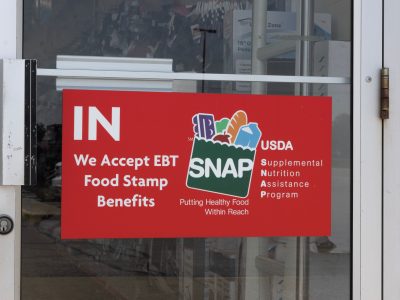Education Expert: Massive Public Investment Needed to Solve Teacher Shortages
School districts across the country continue to struggle with teacher shortages as a new school year begins. There has been a lot of talk about the reasons behind the shortages and what can be done to improve the situation.
 George Theoharis is a Professor of Educational Leadership and Inclusive Elementary/Early Childhood Education at Syracuse University, with extensive experience as both a principal and a teacher.
George Theoharis is a Professor of Educational Leadership and Inclusive Elementary/Early Childhood Education at Syracuse University, with extensive experience as both a principal and a teacher.
Prof. Theoharis says the root of the problem is two-fold:
“We are experiencing teacher and staffing shortages in schools as the result of 1) long-term issues and 2) recent stresses on the K-12 education system. First, the long-term issues stem from decades of policy and public discussion where K-12 schools are labeled as “failing” and the people who work in them are to blame. This is both an intentional attack on public schools by some and a disastrous consequence of the era of school accountability. This has led to an unchecked, multi-decade decline in young people going into teaching. Who wants to go into a field discussed and monitored as failing and the cause of our society’s ills?
K-12 schools did not cause these shortages, thus they will not be able to solve them.
George Theoharis
Second, the recent stresses stem from the pandemic and right-wing/“parental rights” or more accurately, school censorship, organizing. The pandemic put unparalleled stress on many aspects of our society – including teaching and working in schools, where teachers and staff faced enormous challenges, significantly expanding the demands on them. That coupled with right-wing activists across the country yelling at school board meetings, telling teachers how to do their job, and in some places enacting policies that promote anti-democratic and inaccurate curriculum. This is driving people from the classroom and creating K-12 schools as unwelcoming spaces for new professionals.”
Prof. Theoharis also says solutions need to come from outside of the classroom, calling for a major public investment in education:
“The combination of the long-term and recent issues has led to the shortages we are experiencing across the country. This shortage is falling disproportionately on districts and schools that serve predominantly low-income and children of color. In response to this, much discussion is placed on how schools will solve these staffing shortages – that discussion is misguided. K-12 schools did not cause these shortages, thus they will not be able to solve them. K-12 schools will plug their staffing holes as best they can with creative “band-aid” solutions until a larger system issue is addressed. It is time for a massive investment of public funds in the preparation and retention of teachers, and a public reconciliation with the role and professional expertise of those who work year after year in K-12 schools.”
To request interviews or get more information:
Chris Munoz
Media Relations Specialist
Division of Communications
cjmunoz@syr.edu



